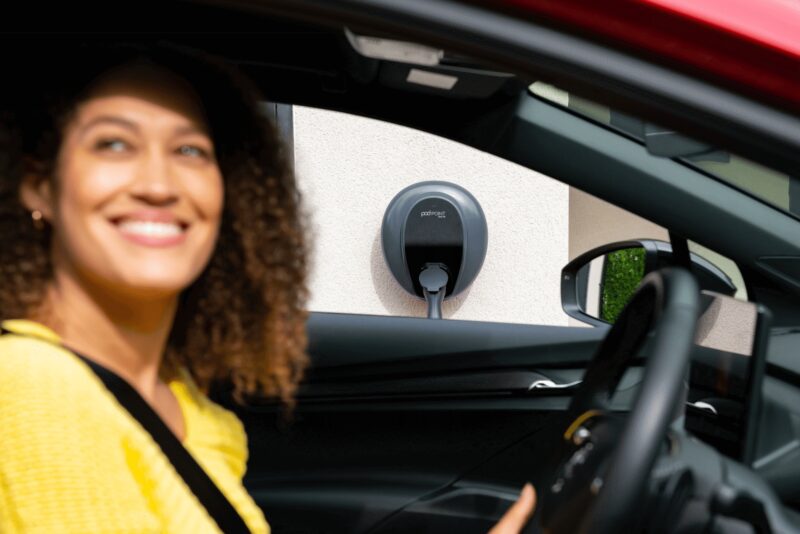How to Drive an Electric Car vs a Fuel-Powered Car
A guide highlighting the differences between driving an electric vehicle (EV) and a traditional combustion engine (ICE) car.
Last updated: Nov 19, 2024 • 4 min read

Summary
Driving an electric car generally offers more comfort and responsiveness than travelling in an ICE car. You’ll notice less noise, better traction and quicker acceleration when driving an EV.
Learning to drive an electric car
When you switch from an ICE car to an EV, it may take some time to adjust to all the ways driving an electric car differs (for the better) from a combustion engine car. But EVs are in no way difficult or harder to drive, and the benefits of driving an EV outweigh the time spent learning and adjusting.
EVs are cheaper and more sustainable to run than petrol or diesel cars. They’re capable of doing long journeys if you plan your charging stops and won’t need charging all too often, especially if you know how to optimise your battery range.
In this article, we want to focus on a less-discussed topic in the EV world that plenty of drivers wonder about – how it feels to drive an EV vs an ICE car.
What’s the difference between driving an EV and an ICE car?
Driving an EV is different from driving an ICE car in a few ways:
EVs are quieter
All EVs are automatic
EVs have faster acceleration
EVs have regenerative braking
EVs offer a smoother driving experience
EVs are quieter
EVs reduce noise pollution because they’re quieter than ICE cars. The electric motor doesn’t rely on combustion and numerous mechanical parts to switch gears and accelerate, resulting in less noise. In fact, they’re so quiet that EVs are fitted with an artificial noisemaker to improve safety by alerting pedestrians of approaching vehicles.
All EVs are automatic
EVs don’t have a traditional gearbox with manual transmission. Instead, they have a simplified version of an automatic transmission with a single-speed motor.
An automatic car is generally smoother and more comfortable to drive, has increased efficiency, and requires less maintenance thanks to the simplified mechanics.
Automatic cars including EVs have no clutch or gears, which reduces the foot pedals in your car to just two – the accelerator and brake.
EVs have faster acceleration
The electric motor in EVs can generate maximum torque instantly, which provides faster acceleration as opposed to the more gradual feeling of acceleration and gear shifts you experience in an ICE car.
EVs have regenerative braking
EVs harness the power of regenerative braking, which repurposes energy that would otherwise be lost when slowing the car down. It improves efficiency by slightly charging your EV on the go and can bring the overall cost of driving it down.
EVs offer a smoother driving experience
Good EV tyres significantly improve the comfort of your driving experience, because they reduce vibration and absorb road irregularities. Plus, fewer moving parts and the low centre of gravity in an EV make driving and handling an EV feel smoother and stable.
Are electric cars difficult to drive?
No, drivers typically find electric cars easier and more intuitive to drive than most traditional ICE cars, especially manual ones. The automatic transmission removes the need for gear shifting, letting you focus on the road. Many drivers also find the acceleration mechanism simpler to manage.
Can I take my driving test in an electric car?
Yes, you can take your driving test in an electric car and even do your driving lessons in one. If you pass your test in an EV, you’ll receive a Category B Auto licence. This limits you to driving ICE and electric cars with automatic transmissions only.
If you want to drive a manual car in the future, you’ll need to pass a Category B driving test, which will allow you to drive manual and automatic transmission cars.
How driving an electric car is different to traditional cars
Driving an electric car offers more responsiveness and comfort than most traditional cars. They’re quieter, easier to drive and accelerate faster, providing an enjoyable driving experience. The increasing excitement around electric motorsports, including Formula-E, highlights the performance capabilities and fun that electric driving can offer.
While there’s a difference in driving and handling EVs compared to ICE cars, electric driving offers clear benefits to the driver and environment. Read more about the benefits of driving an EV in our guide.

